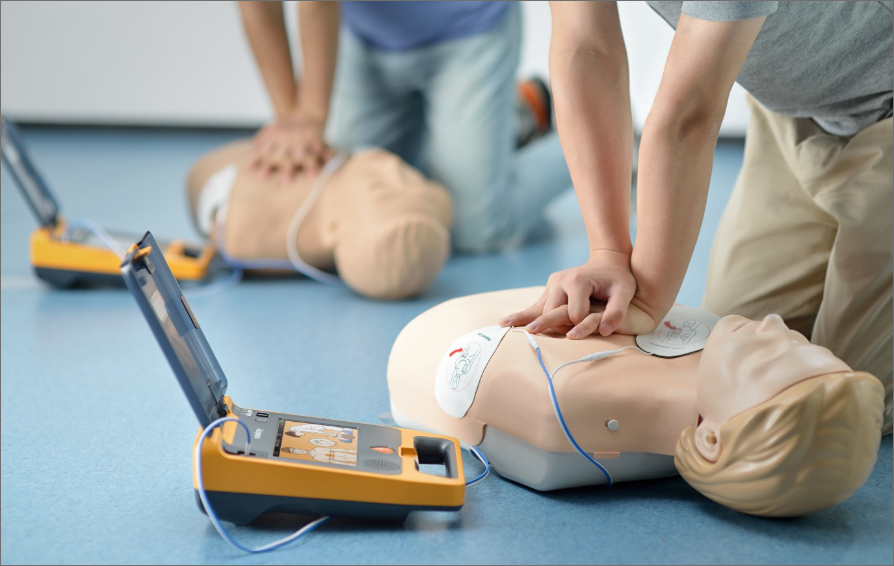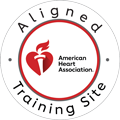In moments of sudden cardiac arrest, an automated external defibrillator, or AED, stands as a beacon of hope, dramatically increasing a victim’s chances of survival. These portable devices deliver an electrical shock to restore a normal heart rhythm, bridging the crucial gap until professional medical help arrives. However, the effectiveness and, more importantly, the safety of AED deployment hinge on a thorough understanding of proper operation and adherence to critical safety protocols. Among these, the act of “clearing the victim” is paramount, a procedure that ensures no one is in contact with the victim during the AED’s electrical analysis or shock delivery. This article will delve into the various situations when a rescuer must clear the victim, providing a comprehensive guide to safe and effective AED use in an emergency.

Understanding AED Safety Protocols
Understanding the core concept of “clearing the victim” is fundamental to AED safety. At its essence, clearing the victim means ensuring that no one, including the rescuer or any bystanders, is touching the victim or any conductive materials connected to the victim during specific phases of AED operation. The underlying principle is simple yet critical: electricity and human contact do not mix. An AED delivers a powerful electrical charge, and any contact with the victim during this process could result in a dangerous electrical shock to the person in contact. This risk extends beyond direct touch; it also includes contact with objects that are touching the victim, such as metal jewelry, a wet surface, or even a rescuer’s clothing if it becomes saturated with sweat or water. Therefore, establishing a clear area around the victim before the AED performs its functions is not merely a recommendation; it is an absolute necessity to protect everyone involved in the rescue effort.
Primary Clearing Situations
There are three primary instances when a rescuer operating an AED must clear the victim, each with its own set of considerations to ensure maximum safety and effectiveness.
Before Analyzing Heart Rhythm
The first critical clearing situation arises before the AED analyzes the heart rhythm. Once the AED pads are correctly applied to the victim’s chest, the device will prompt the rescuer to stand clear while it assesses the heart’s electrical activity. This analysis phase is crucial because the AED needs an accurate reading to determine if a shockable rhythm is present. Any movement or contact with the victim during this time can interfere with the AED’s ability to interpret the rhythm correctly, potentially leading to an inaccurate assessment or a delayed shock delivery. The AED will typically provide clear voice prompts, such as “analyzing rhythm, everyone clear,” accompanied by visual indicators on its screen. A common mistake rescuers make during this phase is to hover over the victim or inadvertently maintain physical contact, disrupting the diagnostic process. It is essential to take a step back and visually confirm that no one is touching the victim or the immediate area.
Before Delivering a Shock
The second, and perhaps most critical, clearing moment occurs directly before the AED delivers a shock. This is the moment when the AED has identified a shockable rhythm and is ready to deliver the life-saving electrical impulse. The AED will issue a loud and unmistakable verbal command, often “shock advised, everyone clear,” followed by a countdown or a clear instruction to push the shock button. At this juncture, the “everyone clear” protocol must be executed with absolute precision. The rescuer must verbally announce, in a loud and commanding voice, “Everyone clear!” and then visually sweep the area to ensure that no one is in contact with the victim. This includes ensuring that other rescuers, bystanders, and any medical equipment are at a safe distance. The general guideline for bystanders and other rescuers is to maintain a distance of at least one foot from the victim to prevent accidental contact or a stray electrical discharge. Failing to verify a clear area before pressing the shock button can have severe and potentially fatal consequences for anyone in contact with the victim.
During Shock Delivery
Finally, maintaining a clear status throughout the shock delivery itself is equally important. Once the shock button is pressed, the AED delivers the electrical charge instantaneously. The rescuer must continue to verbally and visually confirm that no one is approaching or making contact with the victim during this brief but powerful event. While the shock is delivered quickly, complacency during this moment can be dangerous. If someone were to approach or accidentally make contact, the rescuer must immediately issue a stern verbal warning to stay clear. Post-shock safety considerations are also vital; while the immediate danger of the electrical discharge has passed, the rescuer should be mindful of the victim’s condition and the potential for residual electrical energy, although modern AEDs are designed to dissipate this quickly. The focus then shifts to immediate post-shock care, which often involves resuming cardiopulmonary resuscitation, or CPR, if indicated by the AED or the victim’s condition.
Step-by-Step Clearing Protocol
To ensure a systematic and safe approach to AED operation, a step-by-step clearing protocol should always be followed. Before any clearing commands are given, a pre-clearing assessment checklist should be mentally reviewed. This includes verifying that the AED pads are securely attached, the victim is on a dry surface, and no metallic objects are touching the victim. Following this assessment, clear verbal commands are essential. The rescuer should loudly and clearly announce “Everyone clear!” multiple times, ensuring that all present understand the instruction. This verbal confirmation should be accompanied by visual verification of a clear area, where the rescuer physically looks at every person and confirms they are not in contact with the victim. Only once visual confirmation is made should the rescuer proceed with the AED operation, whether it’s allowing the rhythm analysis or delivering the shock. After a shock is delivered, it is crucial to resume safety protocols immediately, often by reiterating “all clear” before touching the victim again to begin CPR or further assessment.
Common Mistakes and How to Avoid Them
Despite the clear guidelines, common mistakes can jeopardize the safety of both the victim and the rescuers. One frequent error is inadequate clearing distance, where rescuers or bystanders stand too close to the victim, creating a risk of accidental contact. Another mistake is failing to check for conductive materials around or on the victim, such as puddles of water, metal jewelry, or even wet clothing, which can act as conduits for the electrical current. Poor communication in team settings can also be detrimental; if multiple rescuers are present, clear and concise commands are vital to ensure everyone understands when to clear. Rushing through safety protocols, driven by the urgency of the situation, can lead to critical oversight. It is imperative to take the few seconds necessary to ensure a truly clear environment. Finally, not maintaining clearing during the entire shock cycle, even for a split second, can be dangerous. The commitment to a clear area must be unwavering throughout the AED’s operation.
Training and Preparation
The importance of regular AED training and certification cannot be overstated. Theoretical knowledge alone is insufficient; practical experience in training scenarios, where rescuers can practice clearing protocols under simulated stress, is invaluable. Such training helps to ingrain the critical steps and verbal commands, making them second nature during an actual emergency. Staying current with guidelines from organizations like the American Heart Association (AHA) ensures that rescuers are equipped with the most up-to-date and effective techniques. Beyond the immediate AED operation, successful resuscitation efforts also involve seamless transitions between CPR and AED use, coordinating effectively with arriving emergency medical services, and maintaining continuous victim care throughout the entire process, including post-resuscitation care considerations.
Frequently Asked Questions (FAQs)
1. What does “clear the victim” mean when using an AED?
“Clearing the victim” means ensuring no one is touching the person receiving defibrillation. This includes removing hands, medical equipment, and ensuring bystanders step back to prevent electrical shock to rescuers during AED analysis and shock delivery.
2. When exactly should I clear the victim during AED operation?
You must clear the victim twice: first when the AED analyzes the heart rhythm (usually takes 5-15 seconds), and second immediately before the AED delivers a shock. Always announce “CLEAR!” loudly and visually confirm no one is touching the victim.
3. Can I continue CPR compressions while the AED analyzes the rhythm?
No, you must stop all CPR compressions and movement during AED analysis. Motion can interfere with the AED’s ability to accurately read the heart rhythm, potentially preventing life-saving treatment or causing inappropriate shocks.
4. What happens if someone is touching the victim when the AED shocks?
If someone touches the victim during a shock delivery, they can receive a dangerous electrical shock. This can cause burns, muscle contractions, or even cardiac arrest in the rescuer. Always ensure complete clearance before allowing the AED to deliver therapy.
Call to Action
Ready to learn life-saving AED skills? CPR Tampa offers comprehensive, hands-on training in a stress-free environment. As an American Heart Association training site, we provide BLS for Healthcare Providers, ACLS, PALS, and CPR and First Aid certifications. Join Tampa Bay’s best CPR training program today – your skills could save a life tomorrow.
Call CPR Tampa now to schedule your certification class!


